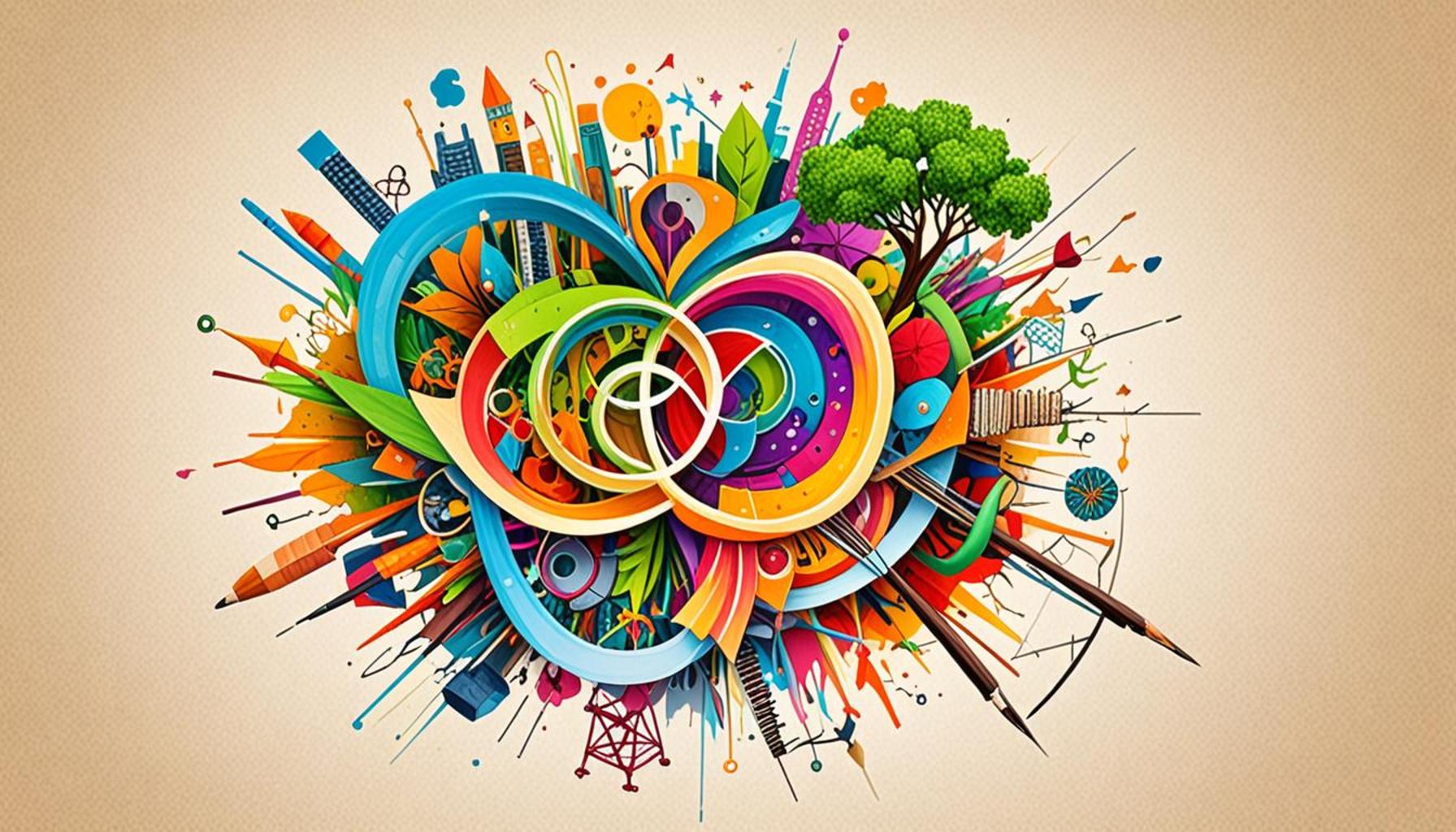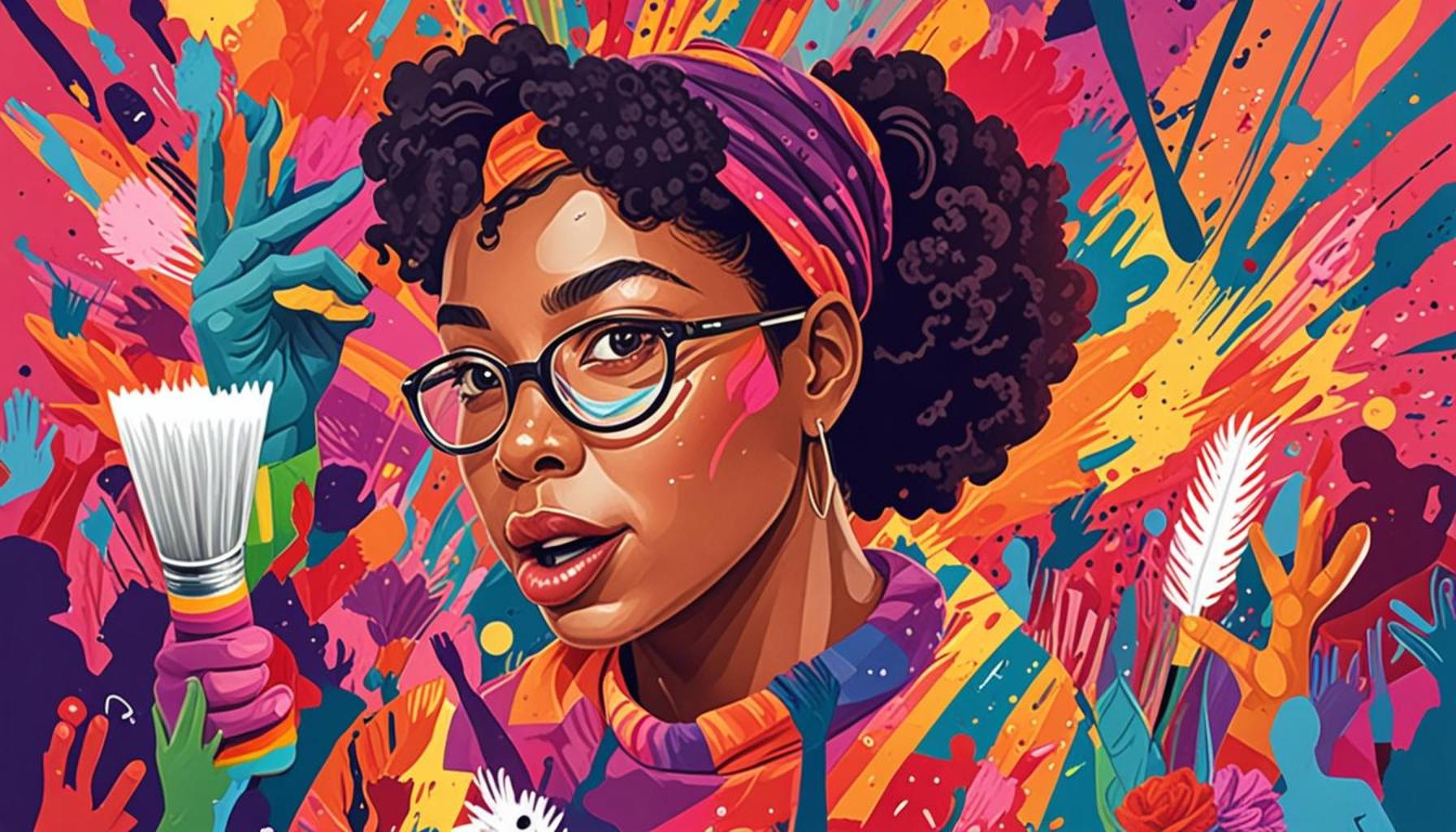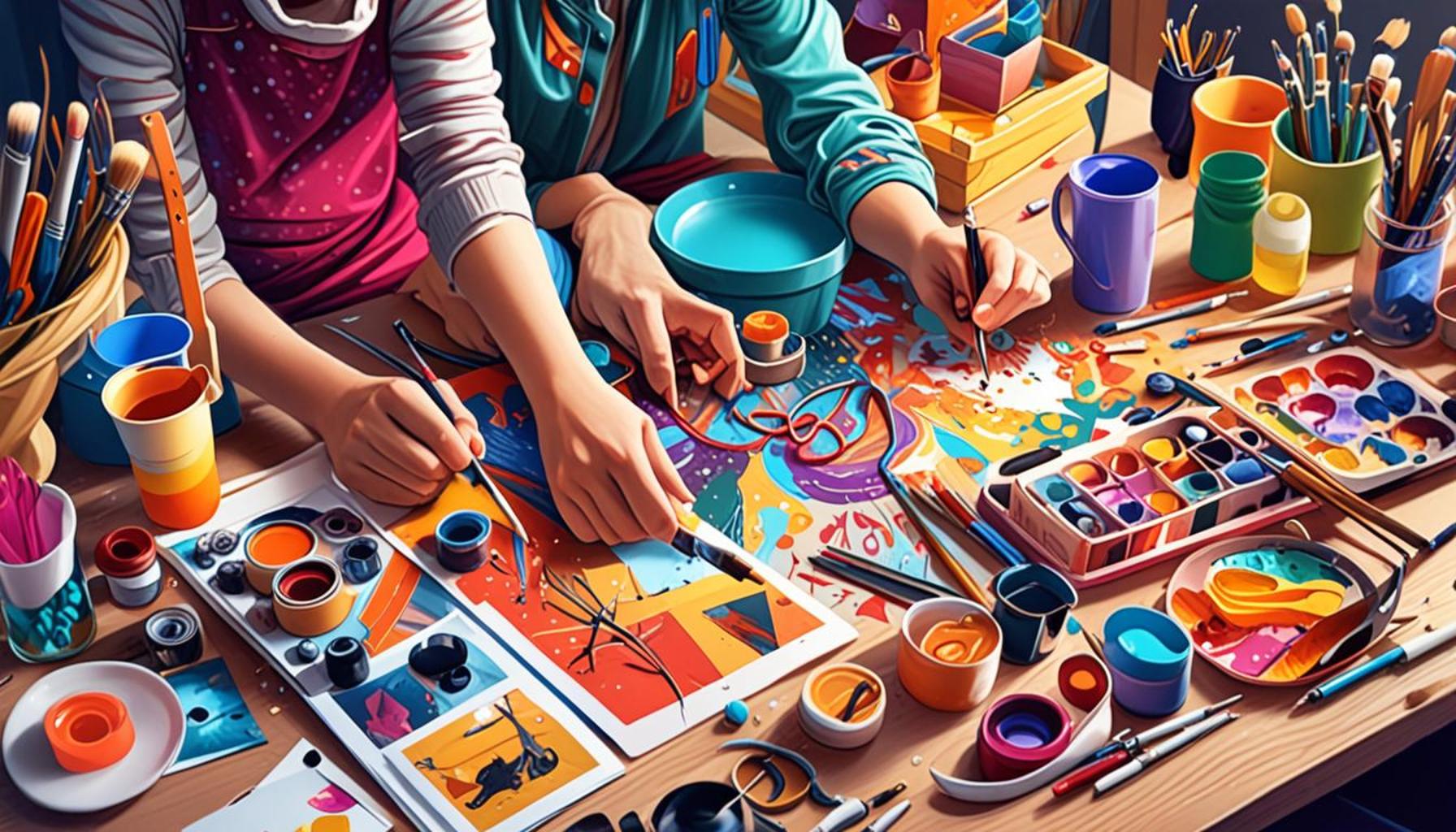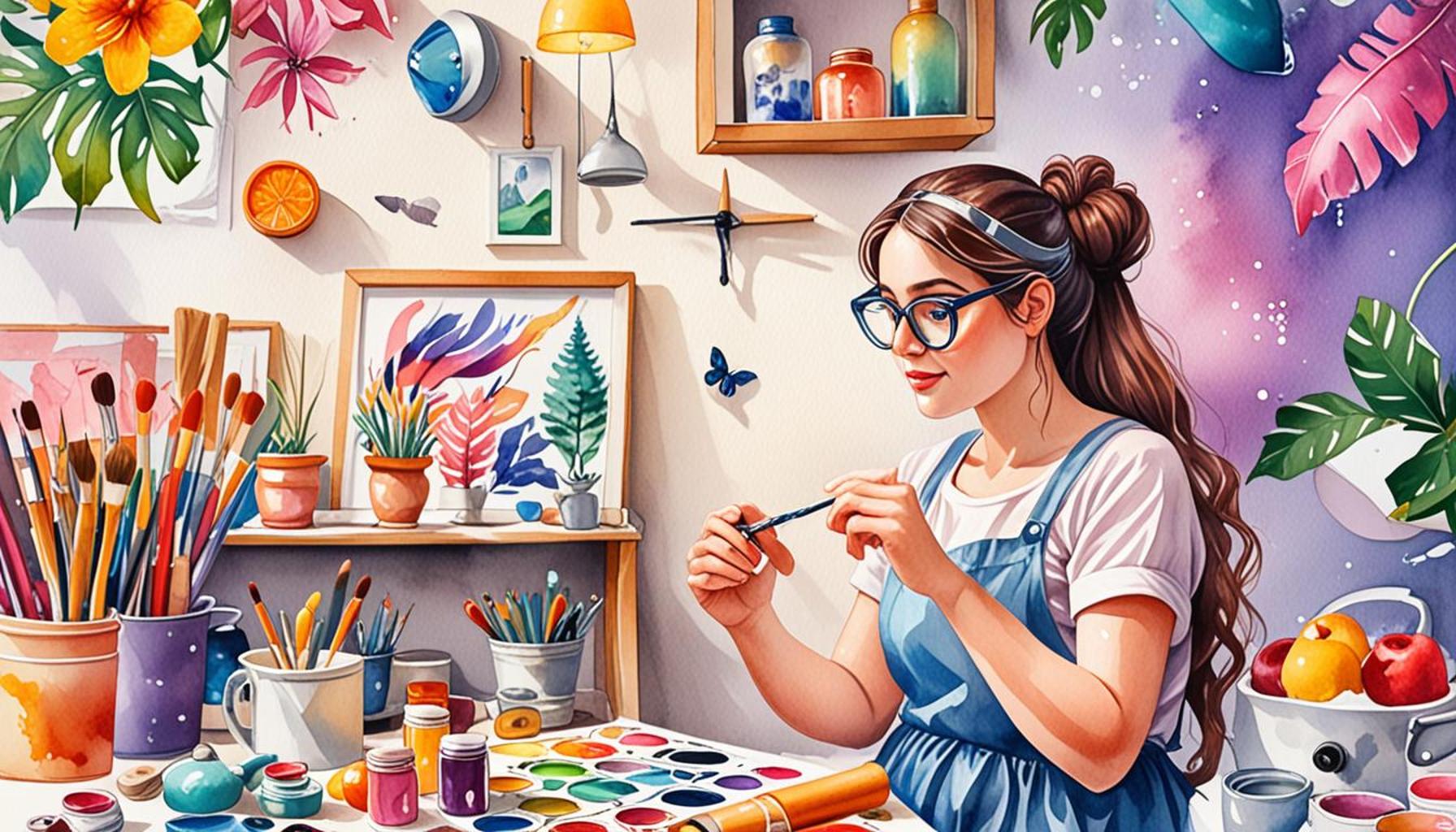The Intersection of Creative Arts and Sustainability: Projects that Make a Difference

The Intersection of Creativity and Sustainability
The creative arts have long served as a mirror reflecting society’s values and challenges. Today, however, they are also emerging as powerful vehicles for sustainability. Artists, designers, and innovators are harnessing their creative talents not only to depict the world’s environmental crises but also to advocate for a sustainable future. This fusion of art and eco-consciousness serves to inspire communities and catalyze dialogues that matter.
Consider the impact of initiatives that integrate artistic vision with eco-friendly practices. One notable example is the EcoArt Fest, an annual event held in various U.S. cities, where artists present works made from recycled materials. This festival highlights the potential of transforming waste into inspiring art, compelling attendees to rethink their relationship with consumerism and waste. Through workshops, installations, and talks, audiences witness firsthand the beauty that can emerge from discarded items, reinforcing the idea that sustainability can indeed be a vibrant part of culture.
Another compelling project, Art in Nature, encourages artists to create installations in natural environments, such as parks and riversides. These projects not only augment the beauty of the natural landscape but also serve as poignant reminders of what we stand to lose if we don’t prioritize environmental protection. For example, sites like the Storm King Art Center in New York showcase large-scale sculptures that invite visitors to connect with the land. As visitors walk through these installations, they are often prompted to appreciate nature’s fragility and the necessity of its preservation.
Furthermore, Community Murals have emerged as powerful mediums for social change. These collaborative artworks often address local environmental issues such as climate change and waste management. By bringing together various community members to contribute their skills and ideas, murals foster a sense of ownership and pride in local initiatives. Cities like Philadelphia and Los Angeles have vibrant mural scenes that advocate for a cleaner environment while bolstering local identity.
Ultimately, these artistic initiatives transcend mere aesthetics; they challenge societal perceptions and stimulate crucial discussions on pressing global concerns. By marrying creative expression with environmental activism, artists are paving the way for a progressive conversation surrounding sustainability’s importance in our everyday lives.
As we explore this compelling intersection of art and eco-consciousness, we begin to uncover how creative endeavors can generate innovative solutions. Each project serves as a testament to the positive change that can occur when art harnesses the power of human creativity to address challenges that affect us all. Through these vibrant expressions of hope and resilience, we are invited not just to admire but to engage and act, paving the way for a sustainable future.
DISCOVER MORE: Click here to learn about innovative materials and techniques
Art as a Catalyst for Environmental Awareness
In an era where climate change and environmental degradation dominate global discourse, the role of creative arts is evolving beyond mere expression. Artists are becoming advocates for sustainability, merging creativity with critical thinking to inspire collective action. Projects that blend artistic innovation with environmental advocacy not only generate awareness but also forge proactive community engagement. Here, we delve into a selection of noteworthy initiatives that showcase how the arts are actively contributing to a sustainable future.
Transformative Urban Spaces
One significant movement is the rise of urban art installations that promote green practices in cities across the United States. Initiatives like Green Roof Projects and Vertical Gardens have gained traction in urban environments, transforming once-drab buildings into vibrant green spaces. These installations not only beautify cityscapes but also improve air quality and reduce urban heat, illustrating how art can align with ecological principles. Cities such as Chicago and New York are home to numerous vertical gardens that serve as functional art pieces and habitats for local wildlife.
Participatory Arts and Community Impact
Participation in the arts fosters a shared sense of responsibility and collective ownership of environmental issues. Programs like ArtPlace America, which funds creative placemaking projects, highlight the importance of community-driven art. These projects often involve local residents in the design and execution of artworks that reflect their unique cultural identities and environmental challenges. For instance, the Hudson River Park’s environmental art program showcases works that engage the public with the river ecosystem, prompting discussions on conservation and climate resilience.
Educational Outreach through Creative Expression
Art also serves as a powerful educational tool to raise awareness about sustainability. Through educational workshops and exhibits, organizations like The Center for Environmental Education employ art to engage younger generations with environmental issues. These programs often include:
- Hands-on workshops where students create art from recycled materials, promoting waste reduction.
- Interactive installations that allow participants to experience the impact of pollution on ecosystems.
- Community exhibitions that highlight local environmental concerns and solutions through creative lenses.
By exposing young minds to creative ways of thinking about sustainability, art cultivates a sense of environmental stewardship. In this context, creativity becomes not just a medium for expression but a climate action tool that empowers future generations.
As we navigate this dynamic intersection of creativity and sustainability, it is clear that the arts possess a unique ability to challenge conventional wisdom and induce meaningful change. Through artistic exploration and community engagement, projects aimed at sustainability not only educate but also inspire action, inviting individuals to reconsider their roles within the ecosystem. Thus, the potential of art to drive forward-thinking conversations surrounding environmental issues becomes a pivotal part of cultivating a sustainable future.
| Category | Details |
|---|---|
| Innovative Art Projects | These projects showcase the role of creativity in addressing environmental issues. For example, muralists use recycled materials to create stunning artworks that highlight sustainability efforts. |
| Community Engagement | Engagement through workshops and collaborative art-making helps to spread awareness. By involving communities, these projects foster a sense of responsibility and ownership towards local environmental initiatives. |
In the realm of creative arts intertwining with sustainability, the impact is profound. Artists are not only creating inspiring pieces but are also becoming activists, advocating for change through their mediums. For instance, public performances and exhibitions designed around sustainability themes often draw significant attention, prompting dialogue around crucial issues like climate change and conservation.Moreover, art installations that incorporate natural elements or recycled materials serve as both aesthetic enhancements to public spaces and educational tools. They often invite viewers to reconsider their relationship with nature and motivate individuals towards more sustainable practices in everyday life.Additionally, projects that merge creativity with sustainability can lead to the development of new, eco-friendly technologies. Artists and innovators collaborate to explore solutions for energy efficiency or waste reduction, showcasing that creative thinking is vital in the ongoing quest for sustainability. Such initiatives inspire both the arts community and the general public to envision a future where creativity acts as a driving force for positive environmental change.
DIVE DEEPER: Click here to uncover the stories behind the collections
Innovative Collaborations Between Art and Science
One of the most exciting developments at the intersection of creative arts and sustainability is the collaboration between artists and scientists. This cross-disciplinary approach allows for innovative projects that highlight pressing environmental issues through artistic interpretation. Programs like Artists and Climate Change showcase how artists can engage with climate scientists to create artworks that visualize data on climate change, making abstract statistics more relatable and impactful. Through eye-catching installations, interactive performances, and digital media, these collaborations translate complex scientific concepts into compelling narratives that resonate with a broader audience.
Art Informs and Inspires Climate Action
Another fascinating initiative is The Ocean Cleanup, which employs innovative art to raise awareness about marine debris. A combination of engineering and public art, the project involves creating large, visually striking installations in coastline communities, illustrating the impact of plastic pollution on ocean ecosystems. Through workshops and visual storytelling, local artists work with community members to visualize cleanup efforts and engage in sustainable practices. This melding of art and environmental activism encourages individuals to take ownership of their role in preserving marine habitats.
Eco-Friendly Art Materials and Practices
As environmental consciousness increases, artists are also examining the materials and methods they use. The rise of eco-friendly art supplies and sustainable practices has become increasingly popular among artists committed to reducing their ecological footprint. From utilizing natural pigments and upcycled materials to implementing minimal waste practices, artists across the country are redefining their creative processes. Organizations such as Art for the Earth provide resources and workshops for artists to explore sustainable alternatives, creating a ripple effect in the community as more individuals embrace environmentally-responsible methodologies.
Public Art with a Purpose
Public art projects have emerged as powerful tools for community engagement surrounding sustainability. In towns like Santa Monica, California, the Eco-Art Program commissions local artists to create works that address environmental themes, from water conservation to biodiversity. These large-scale installations serve as focal points for education and dialogue, inviting residents and visitors to reflect on their connection to the environment. The impact of such public art projects can be profound, fostering a sense of community, promoting eco-consciousness, and inspiring residents to take actionable steps towards sustainability.
By capturing the interplay between creativity and ecological awareness, these initiatives show the remarkable potential of the arts in promoting sustainable practices. Each project contributes to a broader cultural shift towards prioritizing the planet, where art serves not only as a means of expression but as a call to action. As more artists collaborate with environmental organizations and engage the public in meaningful dialogues about sustainability, the boundary between creativity and activism continues to blur, establishing a robust conversation that encourages collective responsibility and stewardship of our natural world.
DIVE DEEPER: Click here to discover more
Embracing Art for a Sustainable Future
As we explore the intersection of creative arts and sustainability, it becomes increasingly clear that these projects are more than just artistic endeavors; they are pivotal movements that foster environmental awareness and action. Through innovative collaborations between artists and scientists, we witness the power of creativity in transforming complex environmental data into relatable narratives. Initiatives like The Ocean Cleanup not only visually demonstrate the effects of pollution but also inspire community involvement through art-driven education.
Furthermore, the shift toward eco-friendly art materials has empowered artists to rethink their creative processes and adopt sustainable practices, ensuring that the materials they use reflect their commitment to the planet. Public art projects, such as Santa Monica’s Eco-Art Program, exemplify how art can engage communities in meaningful dialogues about environmental stewardship. By transforming spaces into opportunities for reflection and discussion, these projects cultivate a deep sense of connection to our natural world.
As we move forward, it is essential to recognize the role of the arts in shaping a sustainable future. Each artistic project serves as a reminder that creativity is not separate from activism, but rather intertwined with it. By harnessing the energy of creativity, we can inspire collective action towards a more sustainable planet. As we support these initiatives, we encourage further exploration and engagement in both environmental conservation and the creative arts, underscoring that together, they can indeed make a significant difference.


